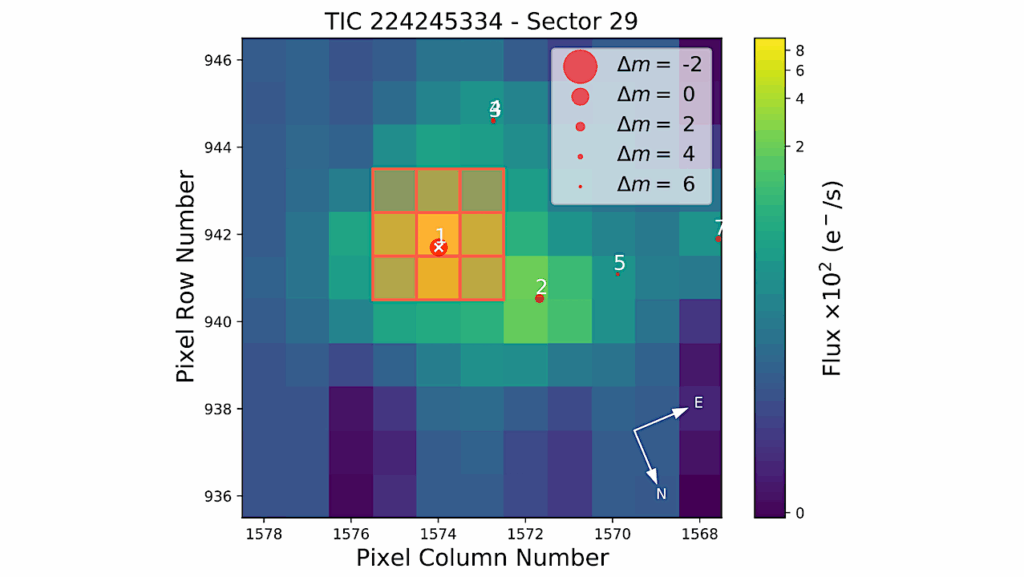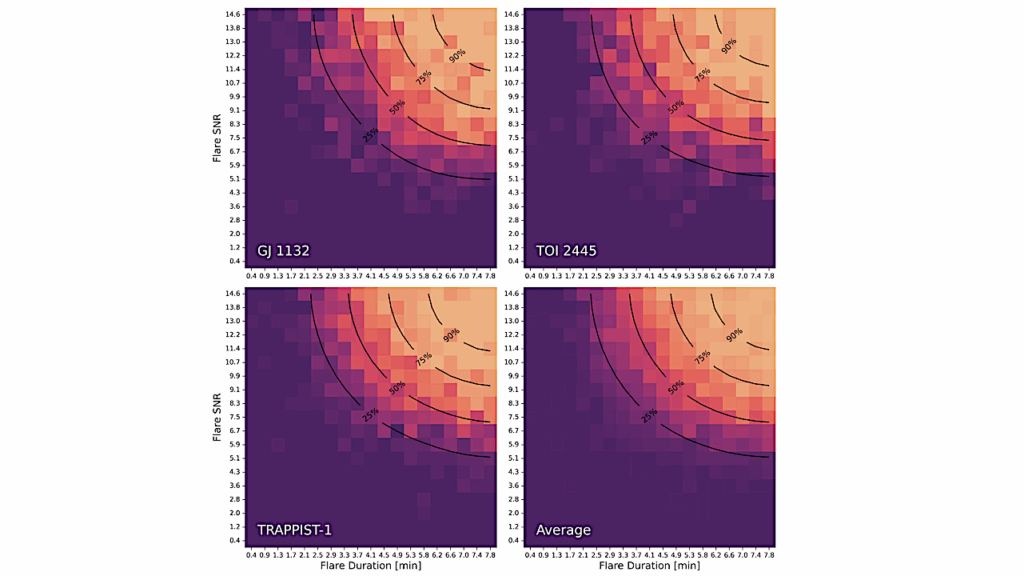Two Temperate Earth-mass Planets Orbiting The Nearby Star GJ1002

We report the discovery and characterisation of two Earth-mass planets orbiting in the habitable zone of the nearby M-dwarf GJ~1002 based on the analysis of the radial-velocity (RV) time series from the ESPRESSO and CARMENES spectrographs.
The host star is the quiet M5.5~V star GJ~1002 (relatively faint in the optical, V∼13.8 mag, but brighter in the infrared, J∼8.3 mag), located at 4.84 pc from the Sun. We analyse 139 spectroscopic observations taken between 2017 and 2021. We performed a joint analysis of the time series of the RV and full-width half maximum (FWHM) of the cross-correlation function (CCF) to model the planetary and stellar signals present in the data, applying Gaussian process regression to deal with the stellar activity.
We detect the signal of two planets orbiting GJ~1002. GJ~1002~b is a planet with a minimum mass mpsini of 1.08 ± 0.13 M⊕ with an orbital period of 10.3465 ± 0.0027 days at a distance of 0.0457 ± 0.0013 au from its parent star, receiving an estimated stellar flux of 0.67 F⊕. GJ~1002 c is a planet with a minimum mass mpsini of 1.36 ± 0.17 M⊕ with an orbital period of 20.202 ± 0.013 days at a distance of 0.0738 ± 0.0021 au from its parent star, receiving an estimated stellar flux of 0.257 F⊕. We also detect the rotation signature of the star, with a period of 126 ± 15 days.

Position of the planets detected orbiting GJ 1002, with respect of the limits of the HZ. The orange and yellow region show the HZ for dry worlds (Zsom et al. 2013), while the green region shows the HZ for wet worlds (Kopparapu et al. 2017). The red and blue regions show the regions in which it would be too hot or two cold.
GJ~1002 is one of the few known nearby systems with planets that could potentially host habitable environments. The closeness of the host star to the Sun makes the angular sizes of the orbits of both planets (∼ 9.7 mas and ∼ 15.7 mas, respectively) large enough for their atmosphere to be studied via high-contrast high-resolution spectroscopy with instruments such as the future spectrograph ANDES for the ELT or the LIFE mission.
A. Suárez Mascareño, E. González-Álvarez, M. R. Zapatero Osorio, J. Lillo-Box, J. P. Faria, V. M. Passegger, J. I. González Hernández, P. Figueira, A. Sozzetti, R. Rebolo, F. Pepe, N. C. Santos, S. Cristiani, C. Lovis, A. M. Silva, I. Ribas, P. J. Amado, J. A. Caballero, A. Quirrenbach, A. Reiners, M. Zechmeister, V. Adibekyan, Y. Alibert, V. J. S. Béjar, S. Benatti, V. D’Odorico, M. Damasso, J. -B. Delisle, P. Di Marcantonio S. Dreizler, D. Ehrenreich, A. P. Hatzes, N. C. Hara, Th. Henning, A. Kaminski, M. J. López-González, C. J. A. P. Martins, G. Micela, D. Montes, E. Pallé, S. Pedraz, E. Rodríguez, C. Rodríguez-López, L. Tal-Or, S. Sousa, S. Udry
Comments: 23 pages, 20 figures, 3 tables
Subjects: Earth and Planetary Astrophysics (astro-ph.EP); Solar and Stellar Astrophysics (astro-ph.SR)
Cite as: arXiv:2212.07332 [astro-ph.EP] (or arXiv:2212.07332v1 [astro-ph.EP] for this version)
Related DOI:
https://doi.org/10.1051/0004-6361/202244991
Focus to learn more
Submission history
From: Alejandro Suárez Mascareño
[v1] Wed, 14 Dec 2022 16:53:58 UTC (2,230 KB)
https://arxiv.org/abs/2212.07332
Astrobiology,








